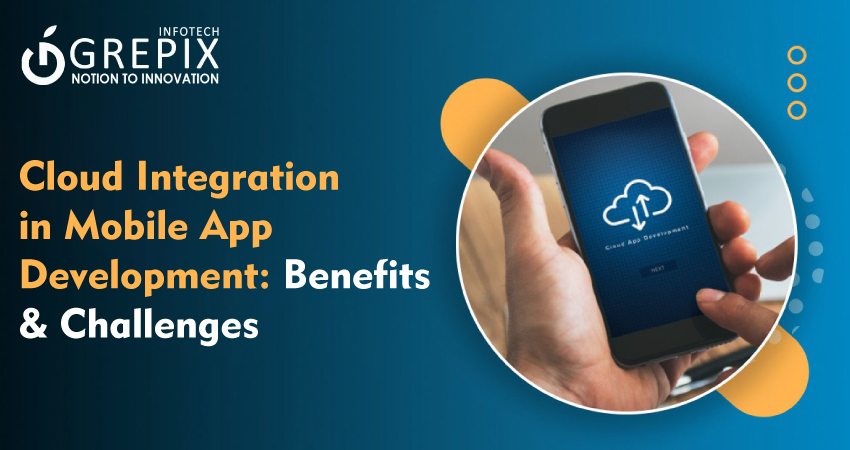Cloud Integration in Mobile App Development: Benefits & Challenges
Cloud app development, SaaS mobile apps, and cloud-native apps have become crucial in 2025 for enterprises aiming to scale, cut costs, and access global markets. This article dives deep into the strategic advantages, common pitfalls, and practical solutions when harnessing the power of the cloud in mobile app development.
Cloud app development, SaaS mobile apps, and cloud-native apps are driving mobile innovation in 2025. These approaches promise improved scalability, flexible cost structures, and unmatched global reach for businesses of all sizes. Real-life examples, statistical insights, and a balanced review of challenges including security, vendor lock-in, and performance bring actionable perspective for CIOs, founders, and developers looking to build robust, future-proof mobile solutions.
What Is Cloud App Development in 2025?
Cloud app development is the design, deployment, and management of mobile apps hosted on remote cloud servers instead of on-premises infrastructure. SaaS mobile apps are delivered as ready-to-use cloud services, while cloud-native apps are engineered from the ground up for elastic scalability and continuous delivery using microservices, containers, and advanced API integrations.
Scalability: Elastic Growth On Demand
- Auto-Scaling: Cloud-native apps handle traffic surges (like e-commerce sales) with instant resource upgrades across servers. Examples include streaming services and global social media apps.
- Global Access: Cloud infrastructure ensures users get data and updates with minimal lag worldwide.
- Seamless Updates: Cloud platforms enable fast app improvements shipping new features instantly.
Cost Efficiency: Pay Only for What You Use
- Pay-As-You-Go: Cloud app development lets companies pay for usage, avoiding heavy upfront hardware investments.
- Optimized Resource Use: Cloud-native apps, using containers and microservices, prevent waste and reduce ongoing maintenance.
- Expense Alignment: Transitioning from capital expenditure (CapEx) to operational expenditure (OpEx) eases budgeting and makes scaling risk-free.
Global Access & Agility
- Remote Collaboration: Teams can work anywhere, securing and updating apps regardless of location.
- Business Agility: SaaS mobile apps make adapting to new workflows, markets, or regulations frictionless and fast.
Real-Life Examples: SaaS Mobile Apps & Cloud-Native Apps
| App Name | Category | Cloud Benefit | 2025 Impact |
|---|---|---|---|
| Slack | Collaboration | Real-time cloud sync, global use | Enhanced team productivity |
| Salesforce | CRM | Mobile access, auto updates | Better customer engagement |
| Shopify | E-commerce | Elastic scaling, secure checkout | Supported SMBs entering new markets |
| Asana | Project Mgmt | SaaS delivery, remote teams | Improved workflow tracking |
| QuickBooks | Finance | Anywhere data, SaaS pricing | Simplified SMB accounting |
Benefits Cloud App Development vs On-Premises
| Feature | Cloud App Development | On-Premises |
|---|---|---|
| Scalability | Elastic/auto-scaling | Manual, often slow |
| Cost Structure | Pay-as-you-go (OpEx) | Upfront CapEx, fixed costs |
| Global Access | Instant worldwide reach | Local, limited, slower |
| Updates | Continuous delivery | Manual, disruptive |
| Security | Shared responsibility | On-site control, mixed |
Key Challenges of Cloud App Development, SaaS Mobile Apps & Cloud-Native Apps
Cost Overruns
- Usage-Based Billing: Sudden spikes, if unmonitored, can lead to unexpected expenses (e.g., a company incurring a $100,000 bill when expecting $2,000).
- Strategy: Implement usage alerts and accurate forecasting tools.
Security & Compliance
- Trust Issues: Sensitive data in the cloud raises privacy and regulatory risks.
- Strategy: Use end-to-end encryption, MFA, zero-trust architectures, and compliance tools (GDPR, HIPAA, etc.).
Vendor Lock-In
- Limited Portability: Migrating between cloud providers (AWS, Azure, GCP) is complex, risking higher future costs.
- Strategy: Favor open standards and multi-cloud architectures.
Performance Bottlenecks
- Network Dependency: Latency, downtime, or limited edge server access can hurt UX.
- Strategy: Use edge computing for latency-sensitive apps and monitor uptime SLAs.
Complexity of Integration
- APIs and Interoperability: Integrating third-party solutions and legacy systems is time-consuming.
- Strategy: Invest in robust API management and cloud integration platforms.
SaaS Mobile Apps: Trends & Case Studies
SaaS mobile apps empower everything from CRM to HRM, and accounting to e-commerce. Noteworthy 2025 SaaS mobile apps include:
- Slack: Streamlined real-time team communication and project management.
- Asana: Mobile-first project control and task tracking for dispersed teams.
- Salesforce: CRM with mobile pipelines and analytics built for remote sales.
- Shopify: Enabled SMBs to grow globally via automated inventory, mobile POS.
Essential Statistics: Cloud App Development & Cloud-Native Apps
- Nearly 75% of IT leaders prioritize cloud-native apps for new projects in 2025.
- The global cloud-native apps market is expected to expand at a 23.7% CAGR, hitting $17 billion by 2028.
- 73% of tech execs report cloud-native app development speeds up releases and drives growth.
- SaaS mobile apps now account for more than 63% of enterprise mission-critical software usage in 2025.
Scalability, Cost, and Global Access: A Comparative Table
| Parameter | Cloud App Development | On-Premises |
|---|---|---|
| Horizontal Scale | Instantly elastic | CapEx-bound |
| Cost | Operational (flex) | Capital (fixed) |
| User Reach | Global, 24/7 | Region-tied |
| Downtime | Minimal, managed | Higher risk, hardware |
| Security | Shared with vendor | Local, mixed results |
Conclusion
Cloud app development, SaaS mobile apps, and cloud-native apps are the backbone of mobile innovation in 2025, enabling unprecedented scale, efficiency, and global agility. Their benefits elastic scalability, cost optimization, remote accessibility make them attractive for any forward-thinking business. Nonetheless, a smart approach is essential to manage cost overruns, security risks, integration headaches, and vendor lock-in. As SaaS mobile apps and cloud-native apps become the standard, now is the time to modernize mobile strategies, whether for startups or global enterprises. Ready to scale globally and future-proof your app? Start your journey with expert cloud app development share these insights with your network and empower digital transformation
FAQs
1. What are the biggest benefits of cloud app development in 2025?
Scalability, lower upfront costs, rapid deployments, and seamless updates ideal for fast growth and innovation.
2. How are SaaS mobile apps disrupting traditional software?
SaaS mobile apps offer instant onboarding, subscription pricing, and global reach, making enterprise tools affordable and accessible.
3. What makes cloud-native apps different?
Cloud-native apps use microservices, containers, and auto-scaling making them robust, responsive, and easy to update vs. legacy apps.
4. How can businesses avoid cloud vendor lock-in?
Choose open APIs, multi-cloud/microservices architecture, and document workflows thoroughly for easier future migrations.
5. What security practices are essential for cloud app development?
Encrypt everything, apply zero-trust, use multi-factor authentication, and keep up with compliance standards (GDPR, HIPAA, etc.).







